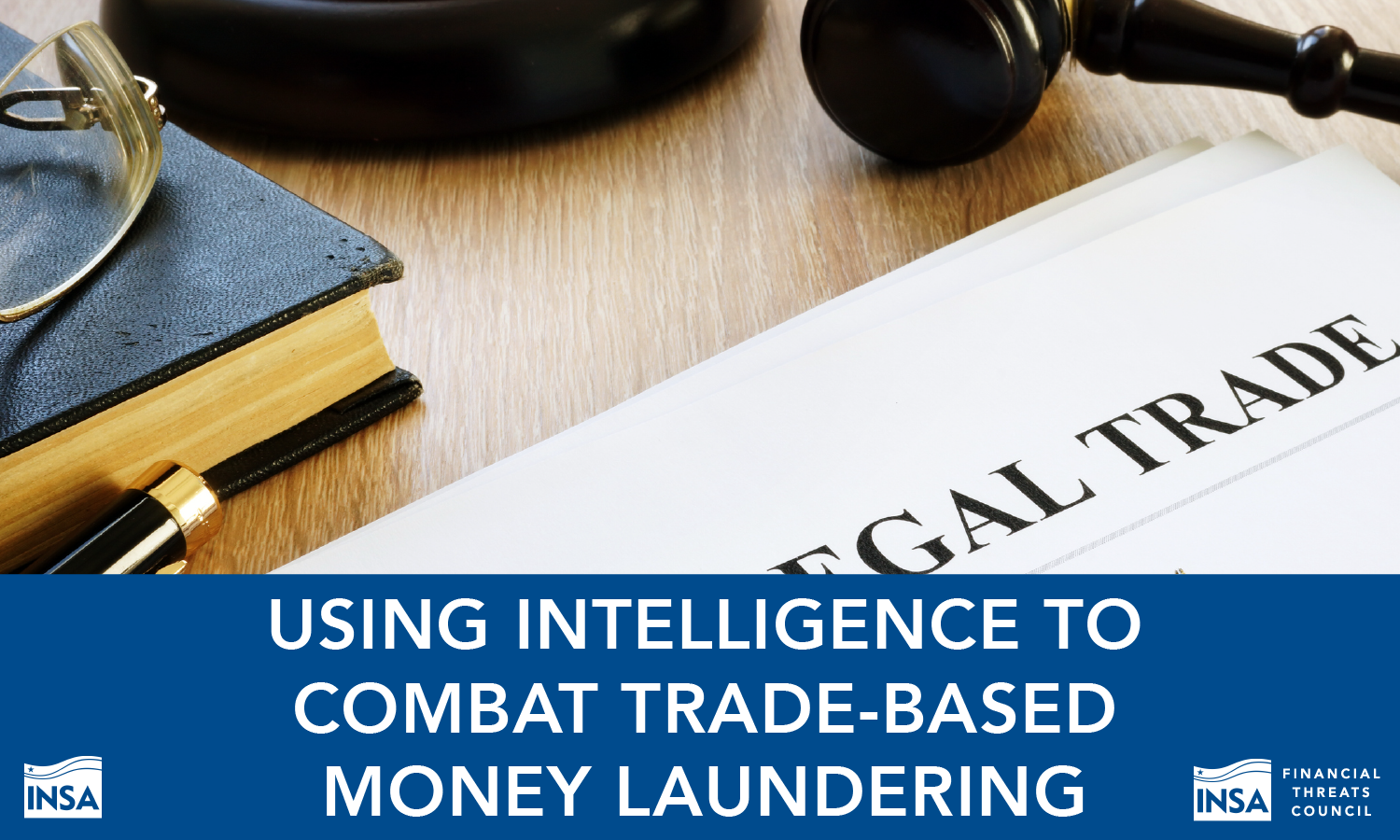Countering Trade-Based Money Laundering Is Focus of New INSA White Paper
(Arlington, VA) May, 7, 2020 -- Calling Trade Based Money Laundering (TBML) a “poorly understood and greatly underappreciated” threat to U.S. National Security, a new Intelligence and National Security (INSA) white paper, Using Intelligence to Combat Trade-Based Money Laundering advocates for the creation of a joint public-private TBML Fusion Center to combat this growing national security threat. INSA is the leading organization for advancing public-private partnerships to address national security challenges.
Characterized as the smuggling of goods and services for illicit profits, TBML proceeds (estimated at more than $1 trillion annually) help fund terrorist and transnational organized criminal syndicates; undercut U.S. foreign policy objectives; enable capital flight; and undermine the integrity of product supply chains, harming both legitimate businesses and consumers. Importantly, the lack of a formalized information-sharing process between affected industries and government intelligence agencies and law enforcement, results in lost opportunities to mitigate this costly, growing national security threat.
The paper, developed by INSA’s Financial Threats Council, finds that no formalized mechanism exists for manufacturers of commercial products to share business intelligence regarding TBML threats, actors, and activities with counterparts at federal intelligence and law enforcement agencies. The paper concludes that effectively countering TBML requires moving from current stovepiped public and private sector efforts to a more unified, collaborative approach.
INSA president Suzanne Wilson Heckenberg commented, “A jointly funded TBML Fusion Center would deliver much needed actionable intelligence and do so in an efficient, secure and trusted environment.”
The paper identifies areas within the Intelligence Community’s current TBML strategies in need of improvement. Most notably, INSA recommends that the IC should enhance its own collection and analysis of TBML information from both open source and clandestine sources and enhance analyst training in how TBML works and affects national security.

